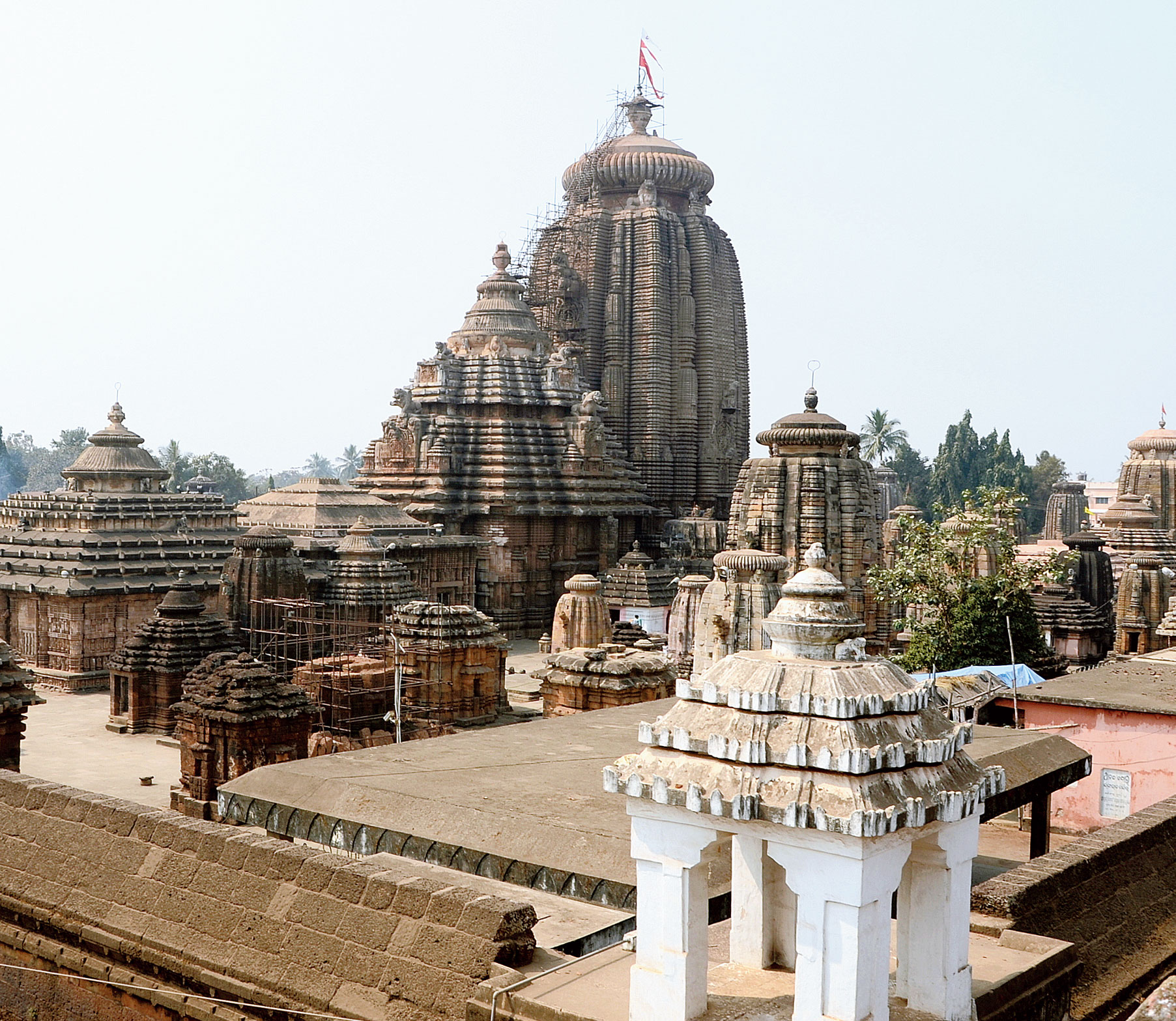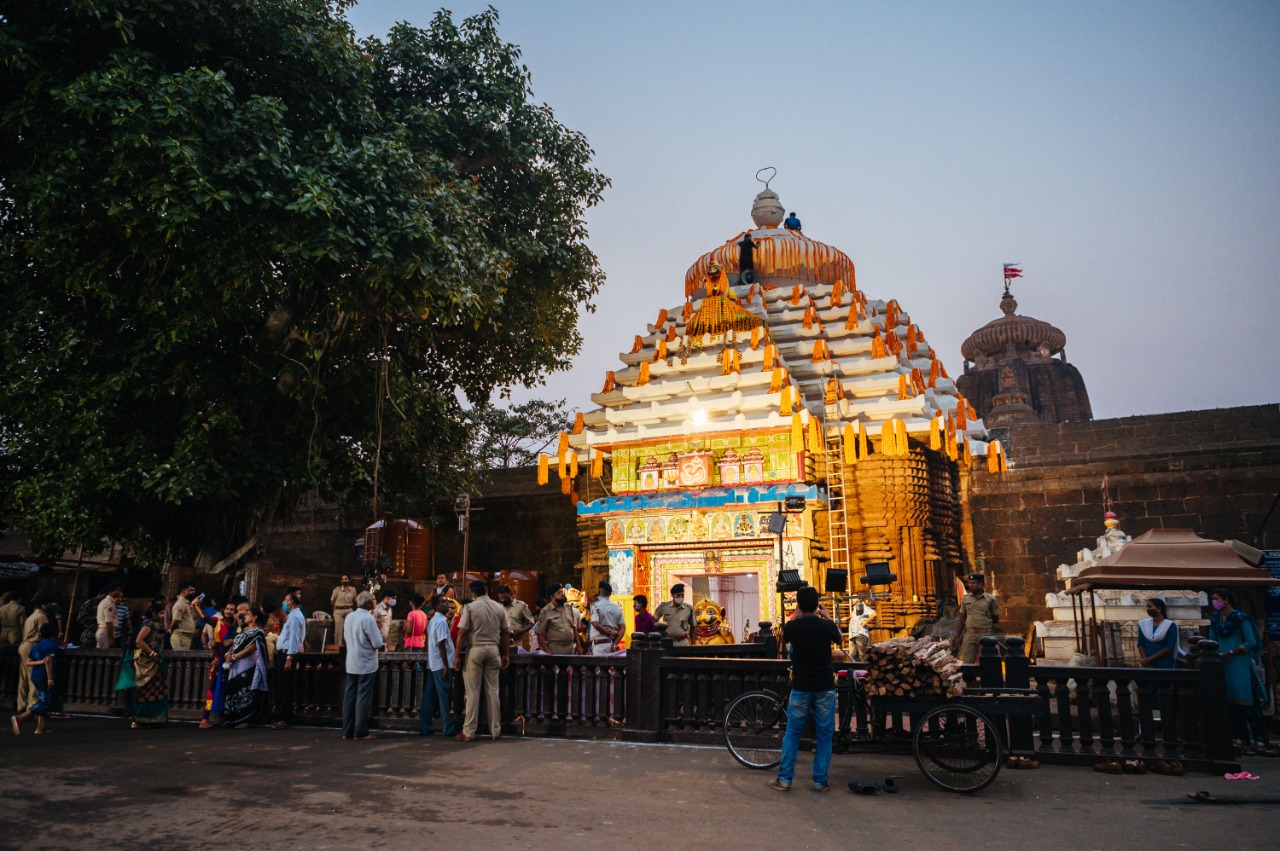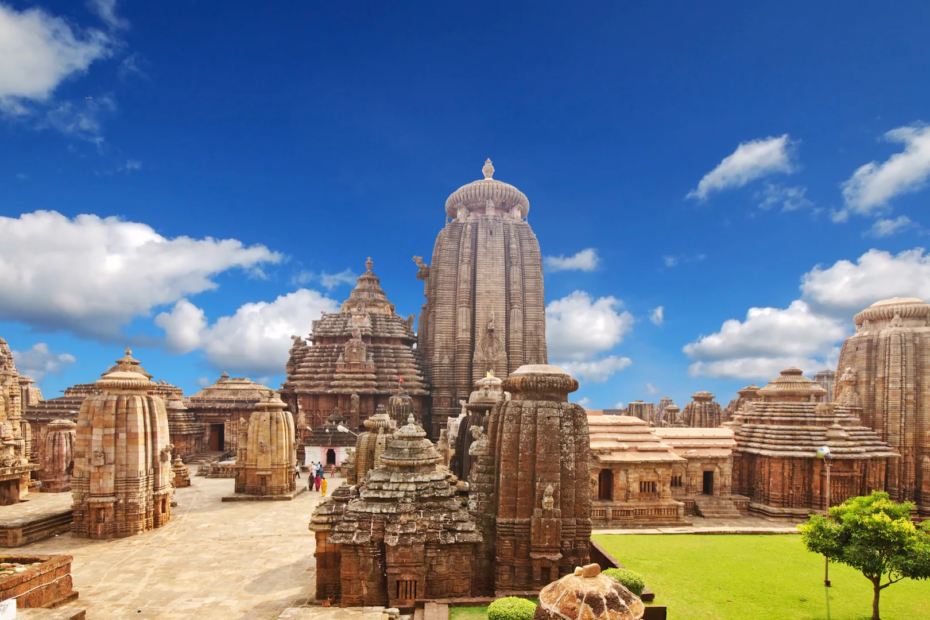Introduction
Bhubaneswar, the capital city of Odisha, is entitled as the “city of temples” as it holds around 700 temples on its sacred land. Most of these temples have been built to pay tribute to the mighty “Lord Shiva”
The Lingaraja Temple is one of the largest Hindu temples in India. This temple is built in Deula style architecture. The temple provides the most eye-catching, outstanding, and pious experience to its visitors.

History
The word Lingaraja means “The King of Lingam”, who is none other than Lord Shiva. He was originally worshipped as Kirtivasa, after that as Harihara., which is also known as Bhubaneswar or Tribhuvaneswara. He is known as the master of netherworld(narka), heaven(swarga), earth(pruthivi) as well as the three worlds (Aakash, Paatal & Dharti). Bhubaneswar got its name from Bhubaneswari, who was a consort of Lord Shiva.

The Lingaraja Temple is very famous among tourists and devotees. The main attraction of the temple is its main pillar which is approximately 180ft in height. It is a magnificent monument dedicated to Lord Shiva. It was built by King Jajati Keshari in the 10th Century and completed by King Lalatendu Keshari in the 11th Century. The main spire is 54 meters high. Besides, there is a pillared hall, a dancing hall (NatyaMandap), and a hall for serving offerings (BhogaMandap). The walled campus has about 50 smaller shrines, including one dedicated to Goddess Parvati. It is the biggest temple in Bhubaneswar. This great temple represents the quintessence of the Kalinga type of architecture, the culminating result of the architectural activities at Bhubaneswar.
Architecture
No other temple in Bhubaneswar is as large as The Lingaraja Temple. The temple is enshrined with a spacious compound wall made of laterite which measures around 520ft by 465ft. Alongside the inner face of the boundary wall, there is a terrace to protect the compound wall from any violators. The tower is around 45 meters high and the temple complex itself has 150 smaller shrines in its large courtyard. The door at the entrance porch is made of pure sandalwood which gives it an antique appearance.
The two stones which were used as building materials for this temple are mainly laterite and sandstone. There is the main entrance located in the ease whereas there are other small entrances located in the north and south. As mentioned earlier, the temple is built in the Deula style that has four main components i.e., vimana, jagamohana, natamandira, and bhoga-mandapa. The dance hall situated in the temple is evidence of the devadasi system that prevailed during that period of time.
Religious Significance
Bhubaneswar is called the Ekamara Kshetra, as the deity, Lingaraja was originally found under a mango tree according to the Ekamara Purana, a Sanskrit text of the 13th century. This text also mentions that the presiding deity was originally not seen as lingam during the Satya and Treta yugas. However, it emerged as a lingam during the Dvapara and Kali yugas. The lingam in the temple is a natural unshaped stone that rests on a Sakti pitha. Such a lingam is called Krutibasa or Swayambhu and is further found in 64 other places in India.

It is attributed to the rising prominence of the Jagannath sect that became predominant during the construction of the temple. The Gangas remodeled the temple and introduced certain Vaishnavite elements like images of Vaishnava Dwarapalas namely Jaya and Prachanda, the flag of the temple was fixed to a Pinaka bow instead of a trident usually found In Shiva temples
Festival and Worship Practices
As per Hindu legend, an underground river that originates from the Lingaraja temple fills the Bindusagar Tank and that water is believed to heal several illnesses. Therefore, the water from the tank is treated as holy and pilgrims take a sacred dip during the festive occasions. The central deity of the temple, Lingaraja, is worshipped both as Shiva and Vishnu. The harmony between the two sects of Hinduism, Shaivism, and Vaishnavism, is seen in this temple where the deity is worshipped as Harihara, a combined form of Vishnu and Shiva.

Shivaratri is the main festival that is celebrated every year in the month of Phalguna. During this time, thousands of devotees visit the temple to pay their homage to the deity. Thousands of bol bom pilgrims carry water from the Mahanadi River and walk all the way to the temple barefooted during the month of Shravana every year.

Non-Hindus are not allowed inside the temple, but they can view it from a viewing platform located outside the temple which can be reached via a line way located to the right of the main entrance of the temple.
The purity and sanctity of the temple are maintained by putting a bar on the visit of dogs, unbathed visitors, menstruating women, and families that have encountered birth or death in the last 12 days. In case any of these happen, a purification ritual is followed and all the prasadam is dumped in a special well located within the temple premises.
Religious Practices
The image of Lingaraja is washed with water several times a day. After washing, it is decorated with flowers, sandal paste, and cloth. Hemlock flowers, bilva leaves, and Tulasi are used in the daily worship of the idol.
Cooked rice, curries, and sweets are displayed as offerings in the bhogamandapa and they are made divine by chanting Sanskrit texts in order to distribute them among the folks. Coconut, ripe plantains, and kora-khai are generally offered to Lingaraja by the pilgrims. On the day of Odia new year or Pana Sankranti, a bhang beverage known as pana is offered to Lingaraja by the devotees.
The Lingaraja temple opens at 6 a.m. and closes at around 9 p.m. However, it is intermittently closed during the offering of bhoga to the deity. Lamps in the cellar are lit during the early morning in order to awaken Lord Lingaraja from his sleep.

The temple is closed from about 12 noon until about 3.30 p.m. A ceremony is known as Mahasnana (ablution) is performed once the doors are closed, followed by pouring of Panchamrita (a mixture of milk, curdled milk, clarified butter, honey, and ghee) upon the deity for purification. At about 1:00 pm, a ripe plantain is divided into two, one half is offered to Sun god and the other half to Dwarapala (the guarding deities in the doorway). Between 1 p.m. and 1:30 p.m., the food offering called Ballabha Bhoga (breakfast containing curdled milk, curd, and vegetables) is offered to the deity. The consecrated food is carried to the temple of Parvati and placed before her as an offering, a practice commonly observed by the orthodox Hindu housewives. At about 2 pm, the Sakala Dhupa (morning’s offering of food) takes place. After the food is offered to Lingaraja, the offerings are carried to the temple of Parvati to serve her. An offering called Bhanda Dhupa is carried out at 3:30 p.m. at the hall of the offering. This food is later offered by the inmates to the pilgrims as Mahaprasada.
How to Reach
The Lingaraj Temple is open for devotees on all 7 days and the starts as early as 6 am. The closing time happens to be 9 pm.
The best time to visit the temple is during March-April when the summer heat is not at its peak.
Road: You can board a local or private bus from the Baramunda Bus stand in Bhubaneswar which is the nearest bus stand.
Train: The nearest railway station is Bhubaneswar railway station which is around 6 km away from the temple.
Air: The Biju Patnaik Airport is around 6 km from the temple. So, you can take a flight as well. Once you reach Bhubaneswar, you can start your journey.
Conclusion
Through the wheel of time, the Lingaraja Temple has been seen as an epitome of Deula style architecture. Till today, the temple stands erect, attracting thousands of devotees around the clock. Wrenched in the architectural style typical of Kalinga, the temple doesn’t only attract religious devotees but also historians.
All images belong to the respective owners.

